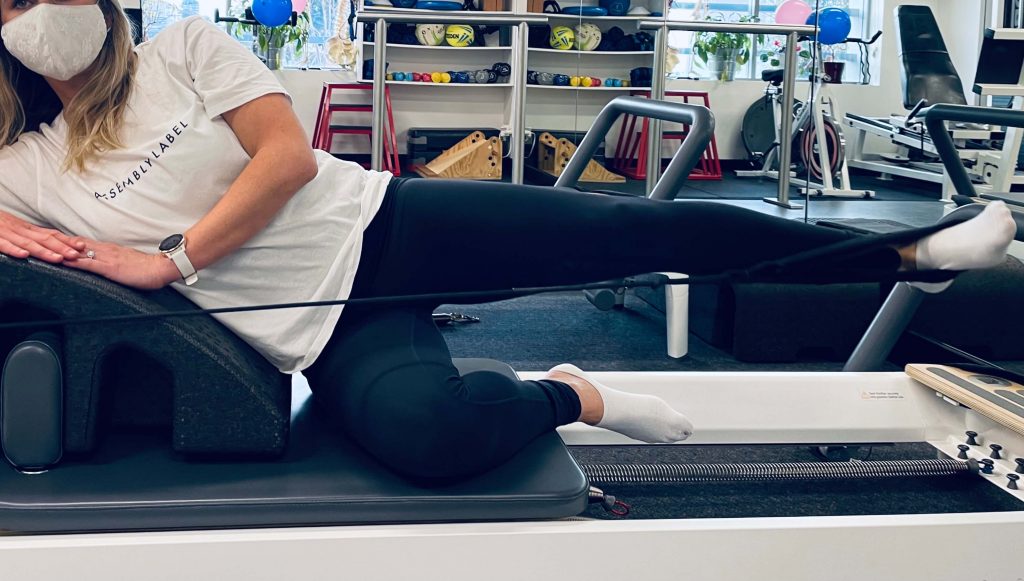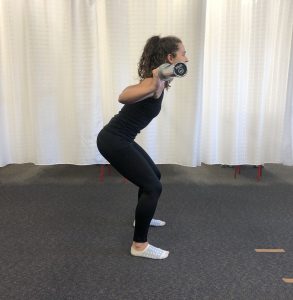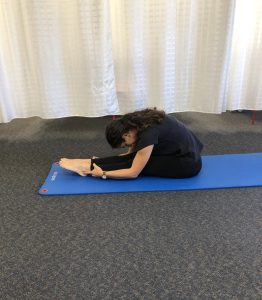One of the most common questions new mums have for their physiotherapist is “when can I return to exercise?”
Unfortunately, there is no simple answer to this. Everyone’s body is different. Just like every pregnancy and birth is individual, so is the recovery time.
Factors that may affect your ability to safely return to exercise include:
- Pregnancy – pelvic girdle pain or back pain, multiple births, long labour.
- Birth – caesarean, the use of forceps, perineal tearing.
- Weakness of pelvic floor before and after childbirth – prolapse and/or incontinence.
- Fatigue from looking after a new baby plus older children.
- Fitness and activity levels before, during and after pregnancy.
All these factors can contribute to how quickly you may be able to return to exercise.
Participating in sport, running or other high-impact activities early after childbirth may actually reduce pelvic floor muscle strength and cause long-term bladder and bowel problems or pelvic organ prolapse. You can minimise the risk of these developing with some careful precautions.
0-3 weeks post-natal
- Gentle walking
- Pelvic floor activation and diaphragmatic breathing exercises.
3-8 weeks post-natal
Clearance from your doctor at 6 weeks is important, but does not provide you with specific information on the condition of your pelvic floor and core muscles. Nor does it provide you with a progressive plan to get to back to exercise.
It is recommended in this time that you also see your Women’s Health Physiotherapist before increasing your exercise intensity or returning to the gym. Your physiotherapist will be able to assess your abdominal separation (rectus diastasis) and pelvic floor, and be able to provide you with a more specific management plan depending on your condition.
- Walking – increased intensity (e.g. hills with a pram.)
- Low impact aerobic exercise – cycling or swimming (once bleeding has stopped.)
- Gym exercise – body weight exercises with higher repetitions. Care with posture and technique. No jumping or high impact.
- Core and pelvic floor exercises as per physiotherapist’s instructions.
8-12 weeks post-natal
- Follow weeks 3-8 but gradually build the intensity of walking. Your physiotherapist might add some light weights to your strength program.
- Continue slightly more advanced core and pelvic floor exercises as per your physiotherapist’s instructions.
- More abdominal work can be added at this time if your separation is small and you have good core control. Its best to start with static holds e.g. 4-point kneeling and plank variations. Sit ups at this stage may make your separation worse depending on your condition.
- This is also a great time to start Post-natal Pilates.
12-16 weeks post-natal
- This is a great time return to your Women’s Health Physiotherapist for an assessment of your abdominal separation and pelvic floor muscle control prior to engaging in high intensity exercises that involve running, jumping or sit ups.
Week 16 and after
- You can return to previous activity levels provided your core and pelvic floor muscles have returned to normal and you are not experiencing and back pain, vaginal heaviness or incontinence.
- Seek further advice from your Women’s Health Physiotherapist if your symptoms persist.
There’s a lot to be said for common sense. No one knows your body better than you. If it doesn’t feel right, or you don’t feel ready, don’t do it.
Listen to your body; it’s the only one you’ve got!
Please note the above information is a general outline for post-natal return to exercise, it is always best to see your physiotherapist for a specific program. Please call the clinic to book your initial assessment.




